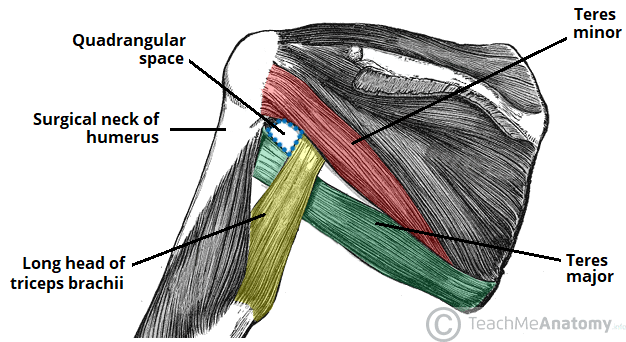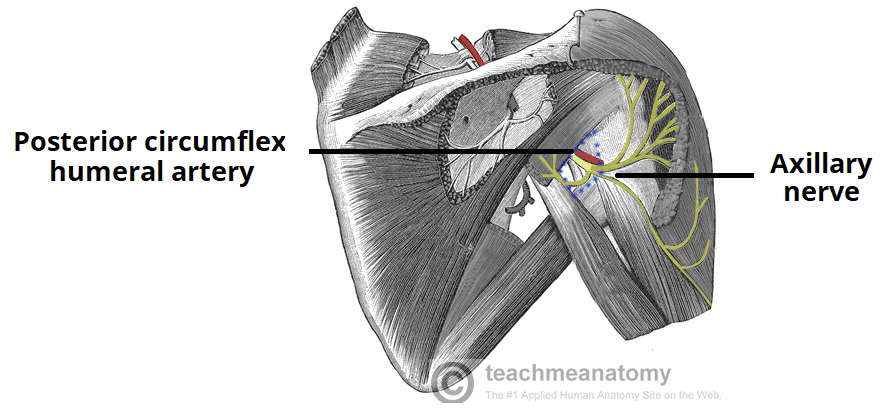The quadrangular space is an anatomical space is the posterior axilla region.
It provides a conduit for structures to pass between the axilla and the posterior compartment of the arm.
In this article, we shall look at the anatomy of the quadrangular space – its borders, contents and clinical relevance.
Borders
The quadrangular space is rectangular-shaped with four boundaries:
- Superior – inferior margin of teres minor.
- Lateral – surgical neck of the humerus.
- Medial – long head of triceps brachii.
- Inferior – superior aspect of teres major.

Fig 1 – Posterior view of the shoulder region, showing the quadrangular space. The subscapularis muscle lies anteriorly, and so cannot be seen on this view.
Contents
The quadrangular space is a passageway that allows structures to travel between the axilla and posterior compartment of the upper arm.
It contains the axillary nerve and posterior circumflex humeral artery (and accompanying vein) as they travel into the posterior upper arm.

Fig 2 – Contents of the quadrangular space; the axillary nerve and posterior circumflex humeral artery.
Quadrangular Space Syndrome
Quadrangular space syndrome refers to compression of the axillary nerve and posterior circumflex humeral artery as they pass through the quadrangular space.
Compression is thought to occur secondary to hypertrophy of the muscular borders of the space, or by the formation of fibrotic bands between the muscles.
Clinical features include pain and paraesthesia in the distribution of the axillary nerve, as well as pain upon shoulder abduction and external rotation.